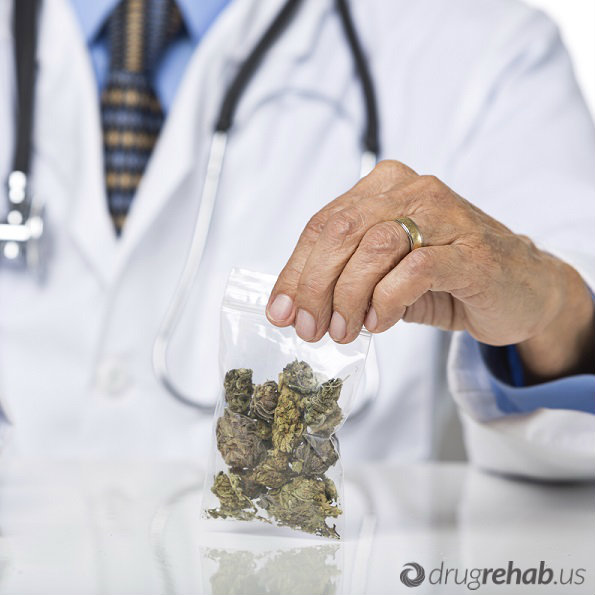How Many People Use Medical Marijuana?
Medical marijuana is the term commonly used to describe the plant-based drug marijuana when consumed as a treatment under the direction of a physician. Despite the known effectiveness of the drug in limited medical contexts, many researchers and public health experts express a legitimate concern that medical marijuana use may contribute to increased marijuana-related harm in the larger population.
In a study published in September 2014 in the journal Drug and Alcohol Review, researchers from the U.S.-based Public Health Institute sought to estimate how many people in California, a state with a widely-developed medical marijuana program, consume marijuana/cannabis in a medical context.
Medical Marijuana – THC And CBD
Marijuana contains two prominent active ingredients, THC (tetrahydrocannabinol) and CBD (cannabidiol). THC is largely responsible for the mind-altering effects closely associated with marijuana/cannabis use. CBD does not have any substantial mind-altering impact. Both THC and CBD have potential usefulness in a medical context.
 Scientifically supported medicinal properties of THC include nausea reduction and stimulation of appetite; other potential, less supported properties include the easing of inflammation and pain, as well as the reduction of muscle spasms.
Scientifically supported medicinal properties of THC include nausea reduction and stimulation of appetite; other potential, less supported properties include the easing of inflammation and pain, as well as the reduction of muscle spasms.
Scientifically supported medicinal properties of CBD include inflammation and pain relief, as well as seizure relief; the chemical may also help ease the severity of psychotic mental states.
Some medical marijuana growers sell products high in THC, while others sell low-THC products that rely on CBD for their effectiveness. However, without a thorough, case-by-case chemical analysis, no one can say how much of either chemical any given batch of marijuana/cannabis contains.
Among other things, this means that there is no such thing as “standard” dose of medical marijuana. For this and other reasons, the U.S. Food and Drug Administration does not recognize marijuana as a medical treatment.
In addition, federal law prohibits the sale or possession of marijuana and other forms of cannabis. Despite these facts, 22 U.S. states and the District of Columbia have laws in place that legalize marijuana/cannabis use as a treatment for certain ailments if a licensed physician issues a prescription.
Marijuana-Related Harm
Within or outside of a medical context, marijuana/cannabis use can lead to a number of significant health problems. For example, roughly 11 percent of all Americans who use the drug will eventually develop a diagnosable cannabis addiction. Addiction risks are especially elevated for people who use the drug habitually (as may be the case for medical marijuana consumers), as well as for people who begin their marijuana intake in adolescence.
Despite CBD’s potential to ease psychosis symptoms, heavy marijuana consumption is clearly linked to increased risks for experiencing psychotic episodes; in addition, regular consumers of the drug develop mental illness in general at a higher rate than the rest of the U.S. population.
Risks On Teen Marijuana Consumers
Apart from heightened risks for addiction, teen marijuana consumers have age-specific risks that include disrupted brain development, learning and memory impairment and an overall drop in intellectual skill. Physical ailments linked to marijuana use include lung infections, chronic bronchitis and heart disease.
How Many People Use Medical Marijuana?
California is one of the U.S. states that permits the sale of medical marijuana and the establishment of widely accessible dispensaries dedicated to medical marijuana distribution. In the study published in Drug and Alcohol Review, the Public Health Institute researchers used information gathered from the 2012 version of an ongoing project called the California Behavioral Risk Factor Surveillance System to estimate how many adult Californians report using marijuana in a medical context. A total of 7,525 randomly selected people took part in this phone-based project.
The researchers concluded that roughly 5 percent of California adults have used medical marijuana at least once. Demographically speaking, two groups of individuals are more likely to use marijuana in a medical context: young adults between the ages of 18 and 24 (also the group most likely to participate in recreational marijuana use) and adults with primarily European racial/ethnic ancestry.
However, medical marijuana use also occurs to some extent in every other demographic group, including men, women, people from various parts of the state, people with varying degrees of educational accomplishment and people from all other racial/ethnic backgrounds.
The study’s authors emphasize the fact that, although medical marijuana use is limited overall in California, people from all walks of life report using marijuana/cannabis in a medical context. The authors also emphasize the need to monitor the extent of marijuana-related harm in people who report using marijuana as a form of medicine. This is especially true since the availability of medical marijuana will likely increase in the future.



